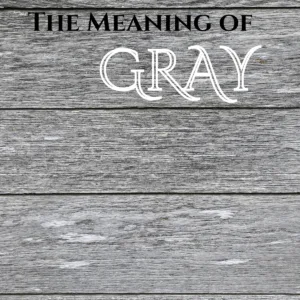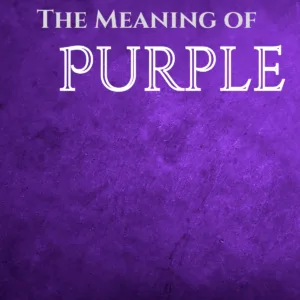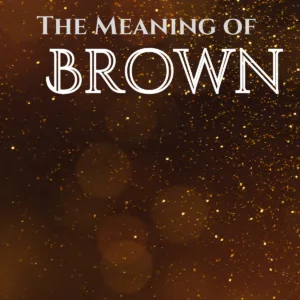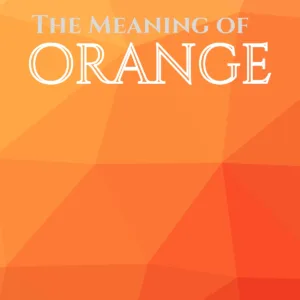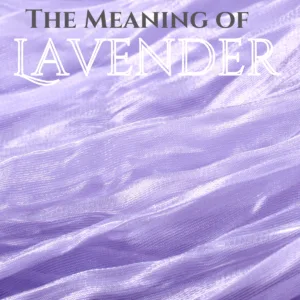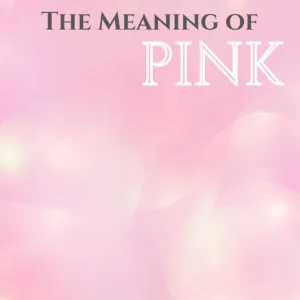The color teal is a unique color that falls somewhere between blue and green on the color spectrum. It is often described as a medium to dark shade of cyan. The word “teal” is derived from the name of a common freshwater duck, the Eurasian teal, which has a greenish-blue stripe on its head.
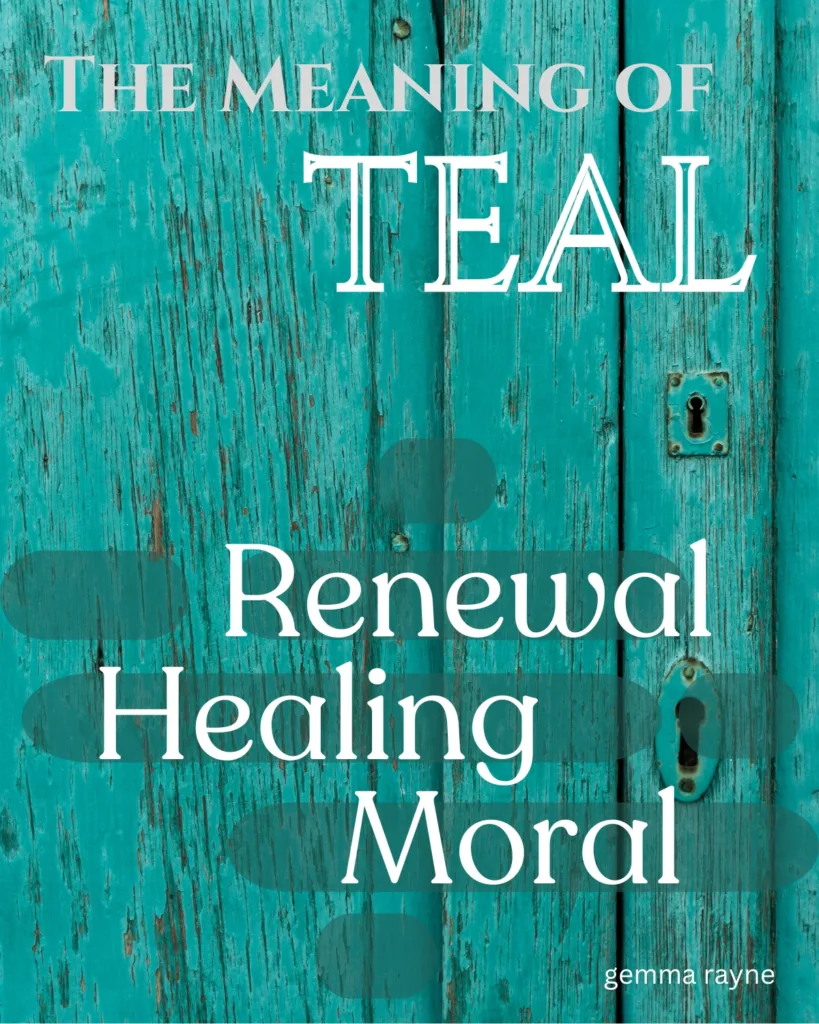
Symbolism and Associations
Teal is a color that is often associated with calmness, serenity, and balance. It is known to have a soothing effect on the mind and body, promoting a sense of tranquility and emotional stability. It is often used in interior design to create a peaceful and relaxing atmosphere.
Teal is also associated with emotional healing and rejuvenation. It is believed to have a cleansing and purifying effect, helping to clear away negative emotions and promote a sense of renewal and growth. It is often used in therapy and meditation practices to promote emotional well-being.
In terms of symbolism, teal is often associated with communication and self-expression. It is seen as a color that encourages open and honest communication, as well as creativity and self-expression. It is often used in branding and marketing to convey a sense of trustworthiness and reliability.
Psychological Effects
Teal is known to have a calming and soothing effect on the mind and body. It is often used in color therapy to promote relaxation and reduce stress and anxiety. The color is believed to slow down the heart rate and lower blood pressure, creating a sense of tranquility and peace.
Teal is also said to promote clarity of thought and enhance mental focus. It is believed to stimulate the mind and improve concentration, making it a popular choice for workspaces and study areas.
Uses of Teal
Teal is a versatile color that can be used in various contexts. In fashion and design, teal is often used to add a pop of color or create a bold statement. It can be paired with neutrals such as white, gray, or beige to create a sophisticated and elegant look, or with brighter colors to create a more vibrant and energetic feel.
In interior design, teal is often used to create a calming and serene atmosphere. It can be used as an accent color in furniture, accessories, or wall paint to add a touch of color and create visual interest. Teal is particularly popular in bathroom and bedroom design, as it is believed to promote relaxation and restful sleep.
Teal is also commonly used in branding and marketing. It is often associated with qualities such as trust, reliability, and professionalism. Many companies and organizations use teal in their logos or branding materials to convey a sense of stability and integrity.
The Psychology of the Color Teal
Teal is a unique color that lies between blue and green on the color spectrum. It is often associated with tranquility, balance, and emotional healing. The psychology of the color teal is quite fascinating, as it can have different effects on individuals depending on their personal experiences and cultural backgrounds.
One of the primary psychological effects of teal is its calming and soothing nature. It has a serene quality that can help reduce stress and promote relaxation. This makes teal a popular choice for interior design in spaces such as bedrooms and meditation rooms.
Teal is also known to stimulate clarity of thought and enhance communication. It is often associated with open and honest communication, making it an excellent color choice for therapy rooms or spaces where deep conversations take place. In terms of emotions, teal is often linked to feelings of trust, harmony, and emotional balance.
It can create a sense of stability and security, which can be comforting in times of uncertainty or emotional turmoil.
On the flip side, teal can also evoke feelings of coldness or detachment. Its association with water and ice can sometimes give off a distant or aloof impression. It is essential to consider the context and other elements when using teal in design or branding to ensure it conveys the desired message.
In conclusion, the psychology of the color teal is complex and multifaceted. Its calming and soothing nature, along with its ability to promote clarity and communication, makes it a versatile color choice. Understanding the psychological effects of teal can help in creating environments that foster emotional well-being and promote positive experiences.
The Beauty of Teal in Nature
Teal is a mesmerizing color that can be found in various elements of nature. From vibrant bird feathers to serene bodies of water, the presence of teal adds a touch of elegance and tranquility. Let’s explore some of the breathtaking instances where this captivating color can be observed in the natural world.
1. Exquisite Bird Plumage
One of the most striking examples of teal in nature can be seen in the plumage of certain bird species. The vivid teal feathers of the peacock, for instance, are a sight to behold. These magnificent creatures proudly display their vibrant plumage, creating a stunning visual spectacle. Additionally, teal can also be found in the feathers of other avian species like the mallard duck and the kingfisher, further adding to the allure of the natural world.
2. Tranquil Bodies of Water
Teal is often associated with calmness and serenity, and what better place to witness this than in bodies of water? From tranquil lakes to serene lagoons, the color teal can be found in the reflections of the sky, creating a harmonious blend of blues and greens. Whether it’s a secluded beach or a hidden oasis, these teal-colored waters have a soothing effect, inviting us to relax and immerse ourselves in the beauty of nature.
3. Exotic Marine Life
Teal is not limited to land and sky; it can also be found beneath the ocean’s surface. Coral reefs, teeming with life and vibrant colors, often feature marine organisms with hues of teal.
From tropical fish like the parrotfish to stunning sea turtles, these creatures showcase the natural beauty of teal in their scales and shells. Exploring the depths of the ocean allows us to witness the enchanting world of teal in all its glory. In conclusion, the color teal is a captivating presence in nature.
Whether it’s the vibrant plumage of birds, the tranquil waters of lakes and lagoons, or the exotic marine life beneath the ocean’s surface, teal adds a touch of elegance and serenity to the natural world. Take a moment to appreciate the beauty of teal in nature and let it inspire a sense of awe and wonder within you.
The Meaning of a Teal Color Aura
Auras are believed to be a subtle energy field that surrounds every living being. These fields are said to contain information about a person’s physical, mental, and emotional state. Each aura color is associated with different personality traits and energies. One such color is teal, which has its own unique meaning and symbolism.
Understanding Teal
Teal is a combination of blue and green, representing the qualities of both colors. It is often associated with balance, harmony, and spiritual growth. A person with a teal aura is believed to possess a calm and peaceful nature. They are often seen as compassionate, empathetic, and sensitive individuals.
Characteristics of a Teal Aura
People with a color teal aura are known for their ability to connect deeply with others on an emotional level. They are often good listeners and provide a safe space for others to express themselves. Teal aura individuals are often highly intuitive and have a strong sense of inner wisdom. They are also known for their creativity and artistic abilities.
Teal aura individuals are often seen as healers and helpers. They have a natural inclination to support and uplift others, making them great friends and confidants. They are also known for their strong sense of justice and fairness, often advocating for the rights of others.
Final Thoughts
Teal is a color that is often associated with calmness, serenity, and balance. It has a soothing effect on the mind and body, promoting a sense of tranquility and emotional stability.
Teal is also associated with emotional healing and rejuvenation, as well as communication and self-expression. It has psychological effects such as promoting relaxation, reducing stress, and enhancing mental focus. Teal is used in various contexts, including fashion, interior design, and branding. Its versatility and symbolism make it a popular choice for creating a peaceful and visually appealing environment.
A teal color aura is associated with balance, harmony, and spiritual growth. People with a teal aura are compassionate, empathetic, and sensitive individuals. They possess a natural ability to connect with others on an emotional level and are often seen as healers and helpers.
Their strong sense of justice and fairness makes them advocates for the rights of others. Overall, a teal aura represents a person who embodies a sense of peace, wisdom, and creativity.
